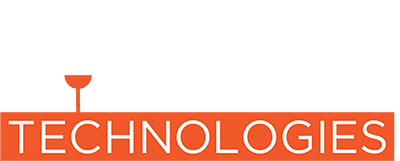Additive Manufacturing Asoption Continues to Accelerate
In 2012, I gave a talk to a metal casting consortium meeting, and asked the audience, "who has heard of Star Wars?" Everyone raised their hand. Next question, “who has heard of 3D printing?" Half the room raised their hand. "Who has a 3D Printer?" ...less than 1% of the hands stayed up. Fast forward to 2021, after a year and a half of crippling pandemics, the "Great Resignation," and many of the foundries in my region own multiple 3D printers. There are foundries and pattern shops with million-dollar production sand printers all over the country. But let's not draw the line at sand printers. This column is where you put your future glasses on.
There are four main paths to make a metal object via 3D printing:
- Printed molds – binder jet printing foundry resin on foundry sand or ceramics
- Printed "waxes" for investment – ink jetting binders on PMMA or printing wax
- Printed tooling – plastic, metal, sand infiltrated with epoxy, etc.
- Direct printed metal – porous sintered or fully melted / fully dense metal parts
Installations are up for all forms of 3D printers using plastic filament (FFF or FDM), binder jet printers for sand, metal, PMMA and wax investment casting patterns, and direct melting laser systems (DMLS or SLS or SLM, shades of grey).
As a couple points of reference, The ExOne Company's annual report for the end of 2021 showed a backlog of $39.4 million, not all of which is expected to be delivered in 2022. That equipment will be a mix of machines making sand molds and direct metal parts in production environments, and represents continued adoption of additive technology in foundries as well as investments by companies who historically bought castings, but are now printing metal parts in house. Titan 3D Robotics launched the Atlas-H from titan – which is both 3D printer and CNC machine in one platform with platform sizes up to 50x50x72 inches. SLM Solutions, a producer of direct metal laser systems, also reports a 26% growth of sales for 2020, and $30.4 million EU. Their recently launched production platform, the NXGII 600 has 12 lasers that dramatically increase throughput – accuracy and part quality that are a real threat to traditional investment casting processes, and a full system approach to production that changes throughput versus historical Additive systems.
Humtown and Hoosier Pattern have been trucking molds and cores all over the country for years. As leading foundries continue to install 3D printers in house to shorten lead times and remain competitive, the need for "Virtual Pattern Makers" will explode. The carpenter's generation is, out of necessity, being replaced by employees wielding 3D scanners, CAD, and simulation software. While skilled freelance virtual pattern makers will probably be able to make good money working from home, foundries with these skills and tools in house will experience unrivalled lead times, flexibility, savings on pattern and tooling storage costs. Customers are already flocking to the foundries who have precociously made these investments.
The quality of the output has improved dramatically in the past five years with respect to strength, surface finish, and accuracy. Usable metals now include a range of aluminum, steel, titanium, and copper alloys, with more being certified every year. From an in-foundry usability standpoint the tools have become extremely viable. Based on the number of installations, and where those systems will be going over the next year, foundries who wait until 2023 to start bringing additive manufacturing in house will officially be "behind the curve."
Generative design tools, like Fusion360, N-Topology, and others continue to re-establish what lightweight means. Digital castings are achieving 80-90% mass reduction, and moving sand & investment cast parts to otherworldly designs. Code-friendly workers are pouring into the market and looking for jobs, so anyone crying "labor shortage" might not be hiring the right class of employee. Those graduating now are looking for jobs with safer and cleaner work environments – but doesn't that mean that they can be satisfied by walking into today’s foundry? Modern tools, with the "now" generation of skills, means access to workers who can scale the value of technology investments several times greater than hiring people to fill "old school" dangerous roles on the floor. Learn, adapt, or die. It's the way of the wild.

